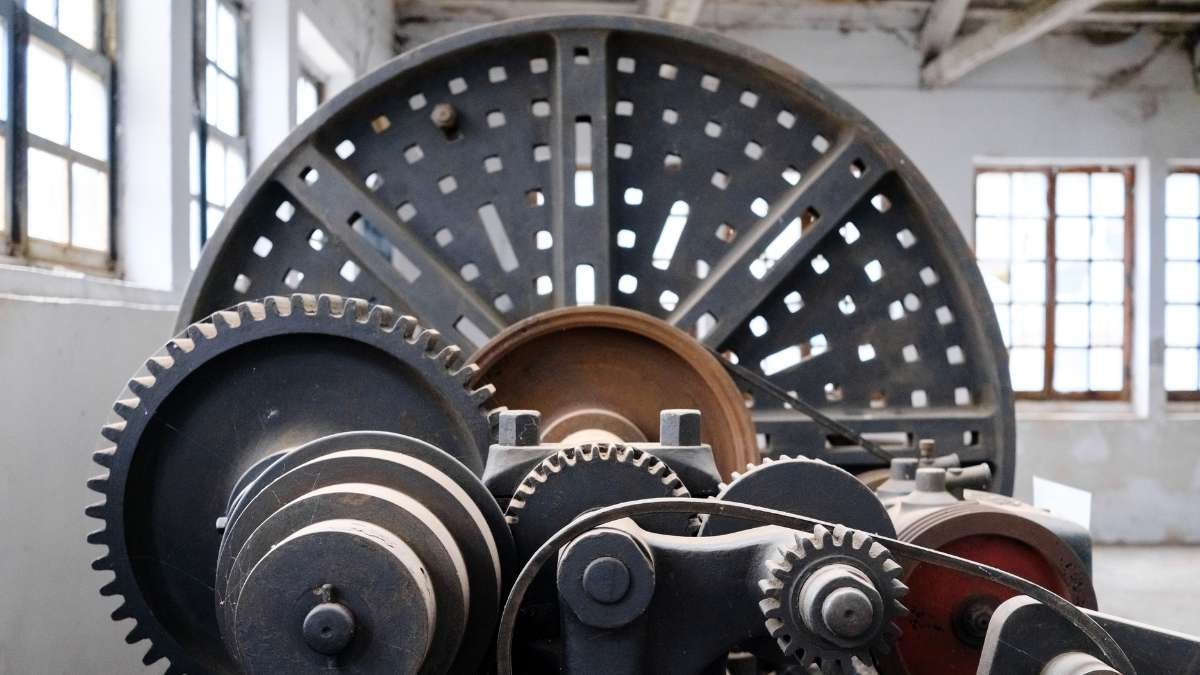History
The Impact Of The Industrial Revolution On Utica
The industrial revolution brought significant changes to Utica, as it did to many cities across the United States. The city saw a shift from an agrarian-based economy to an industrial one, leading to significant growth and development.

The industrial revolution brought significant changes to Utica, as it did to many cities across the United States. The city saw a shift from an agrarian-based economy to an industrial one, leading to significant growth and development.
One of the most significant changes brought by the industrial revolution was the growth of the textile industry in Utica. The city became a hub for textile manufacturing, with mills and factories popping up throughout the area. This growth led to an increase in population as people flocked to the area for job opportunities. The textile industry was instrumental in creating a thriving economy in Utica, and it remained a dominant force in the area for many years.
Another significant impact of the industrial revolution on Utica was the growth of transportation infrastructure. The Erie Canal, which ran through Utica, played a significant role in the growth of industry in the area. The canal provided a way for goods to be transported to and from the city, leading to increased trade and commerce. The growth of railroads also played a crucial role in the city’s development, providing an additional means of transportation and helping to connect Utica to other parts of the country.
The industrial revolution also brought significant changes to the city’s social structure. As factories and mills began to grow, the need for labor increased, leading to an influx of immigrants to the area. Many of these immigrants came from countries such as Italy and Poland and brought with them their cultures and traditions. The growth of industry also led to the development of a new middle class, which led to the growth of the city’s cultural and social institutions.
However, the industrial revolution also had its downsides. As factories and mills grew, so too did pollution and environmental degradation. The growth of industry also led to dangerous working conditions and low wages for many workers, leading to labor unrest and the growth of labor unions.
Despite its challenges, the impact of the industrial revolution on Utica was significant. It helped to create a thriving economy, brought significant changes to the city’s social structure, and helped to connect Utica to other parts of the country. Today, the city is home to a diverse population and continues to be an important center for manufacturing and commerce in the region.
History
The History Of Utica’s World War II Memorial
Utica, New York, has a long and proud history of military service, and the city’s World War II Memorial stands as a testament to the sacrifices made by its citizens during that conflict. The memorial is located in the city’s Memorial Parkway, a beautiful tree-lined avenue that serves as a fitting tribute to the men and women who served their country during World War II.

Utica, New York, has a long and proud history of military service, and the city’s World War II Memorial stands as a testament to the sacrifices made by its citizens during that conflict. The memorial is located in the city’s Memorial Parkway, a beautiful tree-lined avenue that serves as a fitting tribute to the men and women who served their country during World War II.
The idea for a World War II Memorial in Utica dates back to the early 1950s, when local veterans began discussing ways to honor their fallen comrades. In 1953, the city formed a committee to explore the possibility of building a memorial, and by 1955, plans were underway to construct a monument in Memorial Parkway.
The memorial was designed by local architect R. Harry Compton and was dedicated on Memorial Day in 1956. The centerpiece of the monument is a bronze statue of a soldier, representing the thousands of men and women from Utica who served in the armed forces during World War II. The statue stands atop a granite pedestal, which features the names of the 447 Uticans who lost their lives in the conflict.
The World War II Memorial is not only a monument to those who made the ultimate sacrifice; it also serves as a reminder of the sacrifices made by all those who served their country during the war. The monument is a place where visitors can reflect on the bravery and selflessness of those who fought for freedom and democracy.
Over the years, the World War II Memorial has become an important part of Utica’s history and identity. It is a place where people gather to honor the past and pay tribute to the men and women who made the ultimate sacrifice for their country. Today, the memorial remains an important part of Utica’s heritage, and a testament to the city’s proud tradition of military service.
History
The History Of Utica’s Adirondack Scenic Railroad
The Adirondack Scenic Railroad is a historic railroad that runs through the scenic Adirondack Mountains and is a beloved attraction for visitors to Utica, New York. The history of the Adirondack Scenic Railroad dates back to the late 1800s, when rail travel was a popular mode of transportation.

The Adirondack Scenic Railroad is a historic railroad that runs through the scenic Adirondack Mountains and is a beloved attraction for visitors to Utica, New York. The history of the Adirondack Scenic Railroad dates back to the late 1800s, when rail travel was a popular mode of transportation.
The railroad was originally built by the Mohawk and Malone Railway Company in 1892 as a way to transport goods and passengers through the Adirondack Mountains. The line was later purchased by the New York Central Railroad, which expanded the line and added additional tracks.
The Adirondack Scenic Railroad as it exists today was established in 1992, when a group of rail enthusiasts purchased a section of the old New York Central Railroad line and began restoring it to its former glory. Today, the Adirondack Scenic Railroad offers visitors the opportunity to take a scenic journey through the Adirondack Mountains on restored trains, complete with vintage cars and an on-board narrator.
The Adirondack Scenic Railroad is a popular attraction for families and train enthusiasts alike. The journey begins in Utica, where passengers can board the train and begin their scenic journey through the Adirondacks. Along the way, passengers will see breathtaking views of the mountains, forests, and streams that make up this beautiful region.
One of the most popular sections of the Adirondack Scenic Railroad is the trip from Utica to Thendara, which takes passengers through the scenic Moose River Valley. This section of the railroad is known for its beautiful scenery, including the stunning fall foliage that attracts visitors from around the world.
The Adirondack Scenic Railroad also offers a number of special events throughout the year, including holiday train rides and themed excursions. These events are a great way to experience the beauty of the Adirondacks while enjoying a unique and memorable experience.
In addition to its scenic train rides, the Adirondack Scenic Railroad is also home to a number of historic locomotives and train cars. Visitors can take a tour of the railroad’s restoration shop and see these vintage trains up close, learning about their history and the restoration process.
The Adirondack Scenic Railroad is an important part of the history of Utica and the Adirondack Mountains. It is a testament to the importance of rail travel in the development of this region, and a reminder of the beauty and importance of preserving our historic landmarks and traditions. Whether you’re a train enthusiast, a history buff, or simply looking for a unique and memorable experience, the Adirondack Scenic Railroad is definitely worth a visit.
History
The History Of Utica’s Mohawk Valley Health System
The Mohawk Valley Health System (MVHS) is a not-for-profit healthcare system that serves the residents of Utica and the surrounding region. The system is composed of two hospitals, Faxton St. Luke’s Healthcare and St. Elizabeth Medical Center, and several other healthcare facilities.

The Mohawk Valley Health System (MVHS) is a not-for-profit healthcare system that serves the residents of Utica and the surrounding region. The system is composed of two hospitals, Faxton St. Luke’s Healthcare and St. Elizabeth Medical Center, and several other healthcare facilities.
The history of the MVHS dates back to the 19th century when the Utica Orphan Asylum was founded in 1830 to care for abandoned and neglected children. In 1869, the St. Elizabeth Hospital was founded by the Sisters of St. Francis of the Neumann Communities, a religious order dedicated to healthcare.
In the early 20th century, the Faxton Hospital was established in 1902 by the Women’s Hospital Association of Utica. The hospital was named after the association’s founder, Maria Josephine Faxton, a prominent Utica philanthropist.
Over the years, both St. Elizabeth and Faxton St. Luke’s Healthcare grew and expanded to meet the changing healthcare needs of the community. In 1997, the two hospitals merged to form the Faxton St. Luke’s Healthcare system.
In 2014, the MVHS was formed through a merger between Faxton St. Luke’s Healthcare and St. Elizabeth Medical Center. The new system brought together the strengths and resources of both hospitals to better serve the healthcare needs of the community.
Today, the MVHS is a major healthcare provider in the Mohawk Valley region, offering a wide range of medical services and specialties. The system employs more than 4,000 people, including physicians, nurses, and other healthcare professionals.
In recent years, the MVHS has embarked on several major projects to modernize and expand its facilities. In 2019, the system broke ground on a new, state-of-the-art hospital in downtown Utica, which is set to open in 2023. The new hospital will feature advanced medical technology, private patient rooms, and a healing garden, among other amenities.
The MVHS has also been recognized for its commitment to quality healthcare. Both Faxton St. Luke’s Healthcare and St. Elizabeth Medical Center have received numerous accolades and awards for their patient care and safety.
In conclusion, the Mohawk Valley Health System has a long and rich history of serving the healthcare needs of the Utica community. Through its two hospitals and other healthcare facilities, the system has been dedicated to providing high-quality, compassionate care to patients for over a century. As the MVHS continues to grow and evolve, it remains committed to its mission of improving the health and well-being of the people it serves.
-

 Food1 year ago
Food1 year agoThe Best Pizza Places In Utica
-

 History1 year ago
History1 year agoThe History Of Utica’s Music Scene
-

 Food1 year ago
Food1 year agoThe Best Burger Joints In Utica
-

 History1 year ago
History1 year agoThe History Of Utica’s Adirondack Scenic Railroad
-

 History1 year ago
History1 year agoThe History Of Utica’s Boilermaker Road Race
-

 Guide1 year ago
Guide1 year agoA Guide To Utica’s Shopping Districts
-

 Entertainment1 year ago
Entertainment1 year agoThe Best Coffee Shops In Utica
-

 History1 year ago
History1 year agoThe History Of Utica’s World War II Memorial









